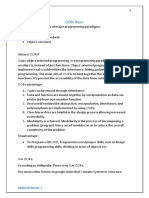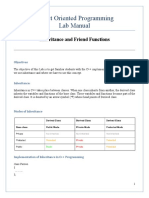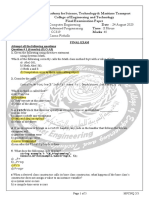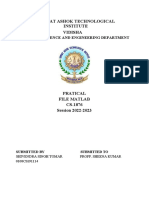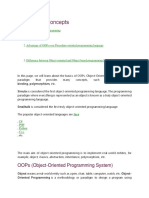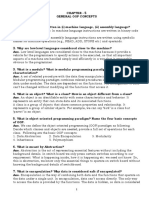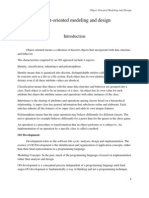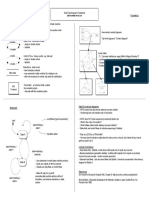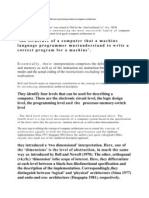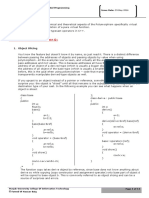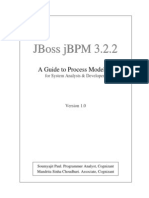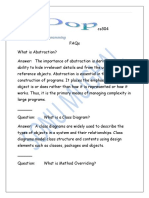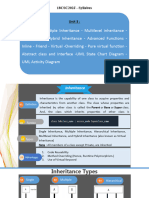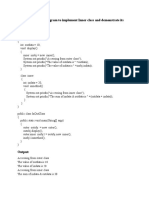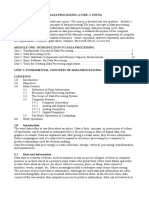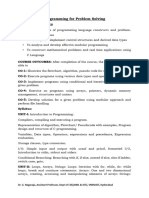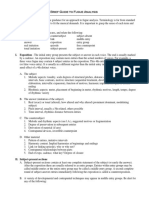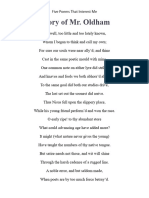Implementing ADT Operations
Abstract Data Types (ADTs) and Their Specification
An Abstract Data Type (ADT) is a model for data structures that specifies:
1. Operations: The set of operations that can be performed.
2. Behavior: How the data responds to these operations, typically described independently of
implementation.
An ADT defines the what but not the how—emphasizing abstraction.
Specification of ADTs
The specification of an ADT includes:
1. Signature: The operations provided by the ADT, including their names, input parameters, and
return types.
2. Behavioral Properties: The preconditions, postconditions, and invariants that describe the
expected results of the operations.
How to Implement an ADT
1. Define the Concrete State Space
The concrete state space is the underlying data representation used to implement the ADT. This
includes:
Variables
Data structures
Other representations of the abstract concepts.
2. Concrete Invariant
A concrete invariant ensures that the internal state of the ADT remains valid. It is a condition that must
always hold true in the concrete representation of the ADT.
3. Abstraction Function
The abstraction function maps the concrete state space to the abstract state space. It explains how the
internal representation corresponds to the abstract specification.
4. Implement Operations
Each operation specified in the ADT is implemented by:
Ensuring that the concrete invariant holds before and after the operation.
Using the abstraction function to verify that the implementation matches the abstract behavior.
Printed using ChatGPT to PDF, powered by PDFCrowd HTML to PDF API. 1/17
�Example: Text ADT
ADT Specification
1. Signature:
`append(String s)`:
Appends string `s` to the end of the text.
`insert(int i, String s)`: Inserts string `s` at position `i`.
`delete(int i, int j)`: Removes characters from position `i` to `j`.
`getText() -> String`: Returns the current text.
2. Behavioral Properties:
For `insert`: The text after position `i` should remain intact.
For `delete`: The characters in the range `[i, j]` are removed.
Concrete State Space
The text can be represented using a `StringBuilder`:
java
StringBuilder text;
Concrete Invariant
The `text` object is never null.
Positions `i` and `j` for operations like `insert` or `delete` must be within bounds.
Abstraction Function
The abstraction function maps the state of the `StringBuilder` to the abstract concept of a sequence of
characters.
Implementing Operations
java
public class TextADT {
private StringBuilder text;
// Constructor
public TextADT() {
this.text = new StringBuilder();
}
// Append operation
public void append(String s) {
text.append(s);
}
// Insert operation
public void insert(int i, String s) {
if (i < 0 || i > text.length()) throw new IndexOutOfBoundsException();
text.insert(i, s);
}
Printed using ChatGPT to PDF, powered by PDFCrowd HTML to PDF API. 2/17
� // Delete operation
public void delete(int i, int j) {
if (i < 0 || j > text.length() || i > j) throw new IndexOutOfBoundsException();
text.delete(i, j);
}
// Get text operation
public String getText() {
return text.toString();
}
}
Summary
Implementing an ADT involves carefully defining:
1. The concrete state space.
2. The concrete invariant to maintain consistency.
3. The abstraction function to map internal representation to the abstract model.
4. Implementations of operations to match the ADT specification.
By following these principles, you can systematically design and implement robust ADTs.
Printed using ChatGPT to PDF, powered by PDFCrowd HTML to PDF API. 3/17
�Features of Object-Oriented Programming (OOP)
Object-Oriented Programming (OOP) organizes code using objects, which encapsulate data and
behavior. Here, we explore three core features: Encapsulation, Object Identity, and Polymorphism,
excluding inheritance.
1. Encapsulation
Encapsulation is the bundling of data and methods that operate on that data within a single unit, usually
a class. It restricts direct access to certain components, ensuring controlled interaction through public
methods.
Key Points:
Provides data hiding by making fields private and exposing methods (getters and setters) to
access them.
Improves modularity and maintainability by separating internal implementation details from
external interaction.
Prevents unauthorized access or unintended modification of data.
Example:
java
public class BankAccount {
private double balance; // Encapsulated data
public BankAccount(double initialBalance) {
this.balance = initialBalance;
}
// Public method to access private data
public double getBalance() {
return balance;
}
// Public method to modify private data
public void deposit(double amount) {
if (amount > 0) {
balance += amount;
}
}
public void withdraw(double amount) {
if (amount > 0 && amount <= balance) {
balance -= amount;
}
}
}
2. Object Identity
Object identity means that each object has a unique identity, even if two objects have the same state
(values of their attributes). Objects are distinct entities in memory.
Key Points:
Printed using ChatGPT to PDF, powered by PDFCrowd HTML to PDF API. 4/17
� Every object is uniquely identifiable via its memory address or an equivalent identifier.
Object identity is typically verified using the `==` operator in many programming languages.
Equality (`equals`) can be defined based on logical equivalence of states, but identity (`==`)
depends on the reference.
Example:
java
BankAccount account1 = new BankAccount(1000);
BankAccount account2 = new BankAccount(1000);
// Checking identity
System.out.println(account1 == account2); // false, different objects
// Checking equality (if logically defined)
System.out.println(account1.getBalance() == account2.getBalance()); // true, same state
3. Polymorphism
Polymorphism allows objects to be treated as instances of their common interface or base type,
enabling one interface to be used for different data types.
Types of Polymorphism:
Compile-time Polymorphism (Method Overloading): Multiple methods in the same class with
the same name but different parameter lists.
Runtime Polymorphism (Method Overriding): A subclass provides a specific implementation of a
method defined in its superclass or interface.
Key Points:
Promotes flexibility and extensibility in code.
Allows for dynamic method dispatch at runtime.
Example of Compile-Time Polymorphism:
java
public class Calculator {
public int add(int a, int b) {
return a + b;
}
public double add(double a, double b) {
return a + b;
}
}
// Usage
Calculator calc = new Calculator();
System.out.println(calc.add(5, 10)); // 15 (int version)
System.out.println(calc.add(5.5, 10.5)); // 16.0 (double version)
Example of Runtime Polymorphism:
Printed using ChatGPT to PDF, powered by PDFCrowd HTML to PDF API. 5/17
